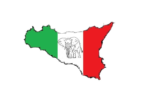Italian red wines are celebrated worldwide for their exceptional quality, diverse flavors, and rich history. Italy is one of the oldest wine-producing regions globally, with a winemaking tradition that dates back thousands of years. Here are some key aspects of Italian red wines:
- Varietal Diversity: Italy boasts a vast array of grape varieties, many of which are indigenous to the country. Each grape imparts unique flavors and characteristics to the wines. Sangiovese, Nebbiolo, Barbera, and Montepulciano are just a few examples of popular red wine grape varieties.
- Regional Distinction: Italy is divided into 20 distinct wine regions, each with its own terroir, microclimates, and winemaking traditions. Some of the most renowned regions for red wine production include Tuscany (known for Chianti and Brunello di Montalcino), Piedmont (famous for Barolo and Barbaresco), and Sicily (home to Nero d’Avola and Etna Rosso).
- Terroir: Italian winemakers place great emphasis on terroir—the unique combination of soil, climate, and topography that influences grape growth. This emphasis on terroir leads to a wide range of wine styles, even within the same grape variety.
- Aging Potential: Many Italian red wines have excellent aging potential. Wines like Barolo, Barbaresco, and Brunello di Montalcino can improve with extended aging, developing complex flavors and aromas over time.
- Food Versatility: Italian red wines are renowned for their versatility in pairing with food. They complement a wide range of dishes, from pasta with tomato-based sauces to hearty meat dishes, such as osso buco or bistecca alla Fiorentina.






Reviews
There are no reviews yet.